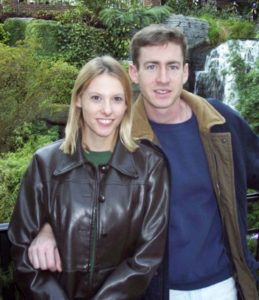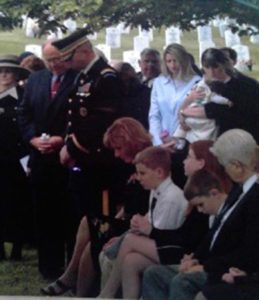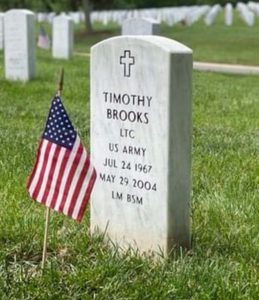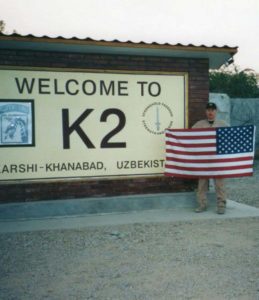Karshi Khanabad Air Base
Quick Facts:
392
Unique Chemical Compounds
The documents declassified by the Department of Defense show just under 400 different chemical compounds that K2 veterans were exposed to.
500%
Greater Chance of Developing Cancer
According to a 2015 Army study; K2 veterans are now dying at an increasing rate, potentially due to this exposure.
15,777+
Military Personnel Were Deployed to K2
While there were as many as 1,300 US Service Members at the base at any one time, there were also hundreds of aircrew members who were transient at the base from 2001-2005 who did crew rest (in 8-12 hour intervals) at the base.
75%
Will Develop an Illness
A study of US Service Members that deployed only to Uzbekistan shows that over 75% have developed some sort of K2 related illness.
K2 Facts
15,777+ U.S. troops: 15,777+ deployed from 2001-2005 to K2 - Karshi-Khanabad, a former Soviet base.
Toxic Exposure: Our nation’s heroes were exposed to depleted uranium, chemical weapons (such as cyanide in the showers), and fuels and solvents which manifested as toxic black goo.
Cancer: 500% higher likelihood of cancer according to a 2015 Army study; K2 veterans are now dying at an increasing rate, potentially due to this exposure.
The DoD recently conducted an initial study to look at cancer outcomes among service members deployed to K-2 and found a higher risk of malignant melanoma and neoplasms of the lymphatic and hematopoietic tissues (excluding Non-Hodgkin Lymphoma and Leukemia).
The VA is participating with DoD in follow-up to assess the health of those who deployed to K-2. VA and DoD hope this research will provide more definitive scientific evidence on the relationship between health and exposures at K-2.
Historical Responses: VA and DoD have historically stood by idly far too long as our troops suffered from Agent Orange in Vietnam and from burn pits in Iraq and Afghanistan – this cannot happen again.
Legislation Summary
H.R. 5957: “K2 Veterans Toxic Exposure Accountability Act of 2020”
- Introduced by Reps. Green and Lynch
- Epidemiological study
- K2 Registry
- Independent scientific review
- Presumption of service connection for K2 illnesses
4429: “K2 Veterans Toxic Exposure Act of 2020”
- Introduced by Sens. Blackburn, Baldwin, and Feinstein
- Epidemiological study
- K2 veteran eligibility for the VA Burn Pits Registry and depleted uranium medical follow up programs
- Access to the National Academies of Science, Engineering, and Medicine (NASEM) to studies conducted by the VA and DoD.
S. 4384: “K2 Veterans Advocacy Act of 2020”
- Introduced by Sen. Sullivan
- Requires the Secretary of Veterans Affairs to enter into an agreement with the Administrator of the Agency for Toxic Substances and Disease Registry to complete a study on illnesses and report to Congress within two years.
- Uzbekistan be included in certain registries, including burn pits.
S. UNK (not yet introduced): ‘‘Presumptive Benefits for War Fighters Exposed to Toxins Act of 2020’’
- Introduced by Sen. Gillibrand
- Presumptive service connection for certain diseases linked to exposure
- Includes Uzbekistan on a list with 28 other countries,
- Requires follow-up research by National Academies of Science, Engineering, and Medicine (NASEM)
S. 4393: “Toxic Exposure in the American Military Act of 2020 (TEAM Act)”
- Introduced by Sen.Tillis
- Does not include Uzbekistan
- Provides consultation and testing through VA for eligible veterans exposed to toxic substances. - Requires VA to respond to new scientific evidence regarding diseases associated with toxic exposure within an established timeframe
- Establishes a scientific commission to research the health effects of toxic exposure in veterans and report the commission’s findings to VA and Congress
- Ensures VA enters into agreements with the NASEM to conduct scientific studies regarding associations between diseases and exposure to toxic substances during military service
- Develops a portal for veterans to access the Individual Longitudinal Exposure Record
- Expands training on toxic exposure issues for VA health care and benefits personnel
- Requires VA to develop a questionnaire for primary care appointments to help determine whether a veteran may have been exposed to toxic substances during service
**K2 veterans will not be fully recognized until Uzbekistan is added to Chapter 38 of the Code of Federal Regulations (38 CFR) §§3.317(c)(1) and 3.317(e)(1)-(2). These sections define the Southwest Asia theater of operations – including Afghanistan – and defines several presumptive conditions, all of which have occurred in K2 veterans.
Documents
Documents Declassified by the House Oversight and Reform Committee:
(These links will lead to a page that will download the document to your computer)
SFF Research
News Links
News Articles about K2
(These links will open a new page)
Toxic exposures of post-9/11 service members revealed in declassified K2 documents, Washington Examiner 07/11/2020
Military knew as many as 75% of forces at Uzbek base would be at risk for toxic air, McClatchy 07/09/2020
DOD knew K2 troops were exposed to a cancer-causing toxins; VA continues to deny care, Stars and Stripes 07/09/2020
Veteran Illness from Post-9/11 Service at Secret Uzbek Base Inadequately Addressed, Lawmakers Say, Washington Examiner 3-8-2020
Congressman who also served at toxic ‘black goo’ base reveals his own cancer fight, Newsbreak 2-27-2020
K2 Military Veterans, Widow Share Stories of Deadly Exposure with Lawmakers, ABC News 2-27-2020
Military showers had cyanide at ‘black goo’ base. New bill could help those veterans, McClatchy 2-26-2020
K2 veterans demand investigation into deadly exposure: 'Congress needs to act', ABC News 02-14-2020
Cancers Strike US Military Deployed to Uzbekistan After 9/11, McClatchy 12-19-2019
Videos
Stories From Our Veterans
Read About K2 From the Perspective of Our Veteran's and Their Families
(These links will open a new page)
Sign Up for Emails From Stronghold Freedom Foundation
Keep up on all the news about what the foundation is doing to help K2 veterans.







